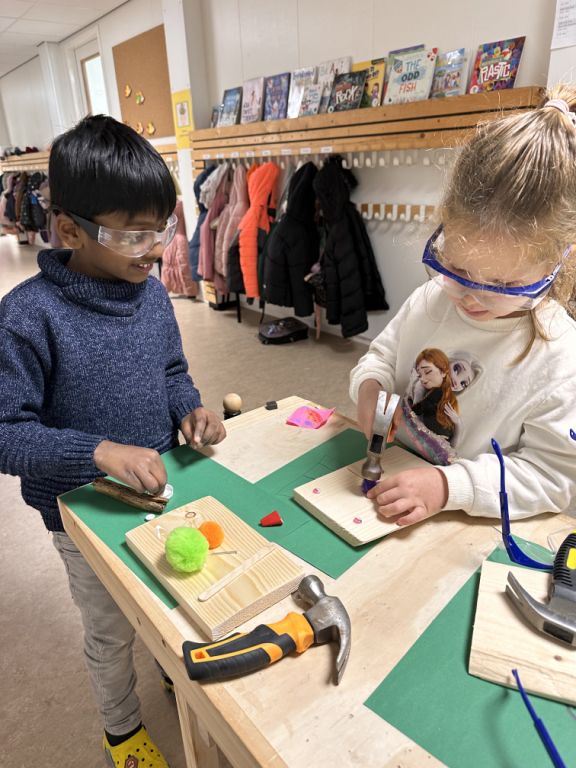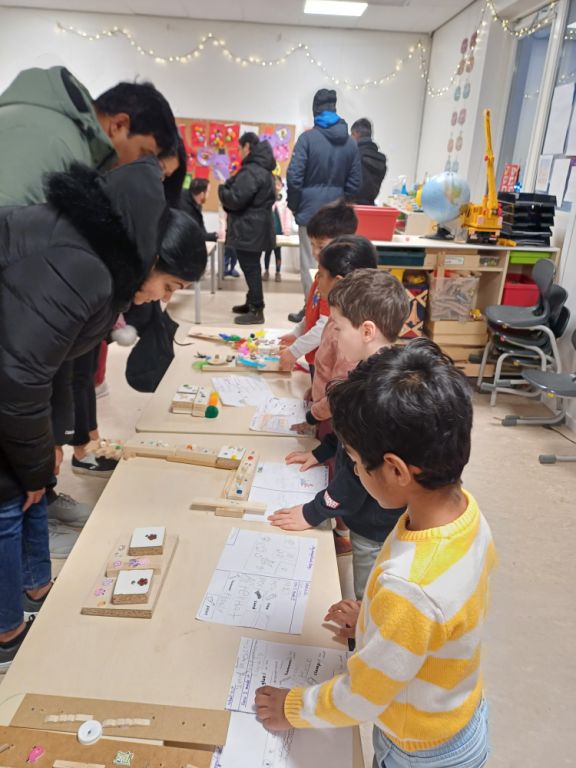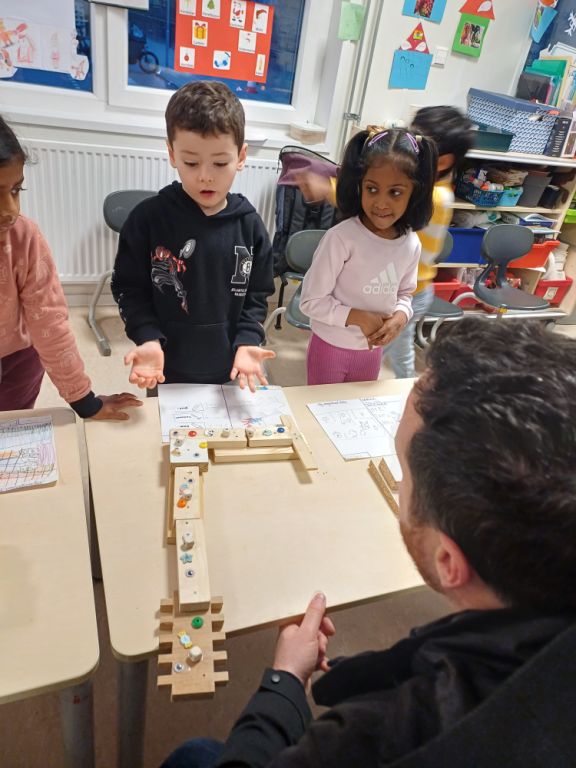Initially, we taught our students how to use the tools safely, starting with hammer and nails while working on simple 2-D projects. Once they mastered hammering nails, they moved on to using the drill and screwdriver while creating more complicated 3-D projects. The final skill they mastered is sawing.
Woodwork is a low-risk activity as it is supervised. Woodwork allows children to experience risk in a controlled situation, providing opportunities for making judgements and learning to self-assess risk. As part of our social-emotional curriculum, children also learn self-care by protecting their eyes with safety glasses and wearing gloves when sawing. Woodwork also develops other aspects of learning and development, supporting maths, scientific investigation, physical coordination, language, and vocabulary.


Social, emotional and physical development
Children gained confidence and a sense of responsibility when allowed to work with real tools. As they mastered more tools and techniques, they took pride in accomplishing increasingly complex tasks. Children developed perseverance and concentration as they persisted. A great example of this are the students, who initially struggled to hammer nails into wood due to weaker fine motor skills, continued returning to the woodworking table to start new projects despite the struggles they had had before.
Woodwork not only develops their hand-eye coordination, but also fine (holding a nail, screwing) and gross motor skills (hammering, sawing). Children’s core strength is developed as they push/pull (sawing, filing), rotate (using a screwdriver, drill, wrench, vice), lever (using a claw hammer) and rub (with sandpaper).
Language
Many conversations took place as the children discussed their design plans and material choices, reflected and modified their plans. There were opportunities for writing while developing design ideas or writing about their work process afterwards. During the KG 2 celebration of learning at the end of the Materials unit, the students used their presentation skills to share their work and explain the design process to their parents and KG peers. This opportunity contributed to their social skills development and taught the value of sharing ideas and learning from others.
Mathematics
Numeracy is basic to woodwork. Children measured and compared pieces of wood; they experienced shape, size and weight. Constructing three-dimensional forms develops their spatial awareness and builds on their understanding of 2-D and 3-D shapes. It was amazing to observe the children use their critical thinking skills as they estimate which is the best length nail to use, or how long a piece of wood needs to be for a particular purpose.


